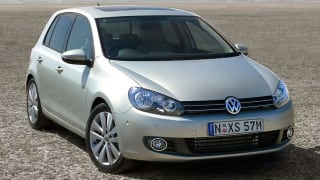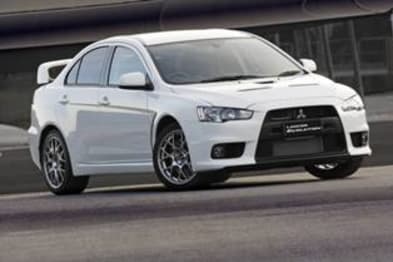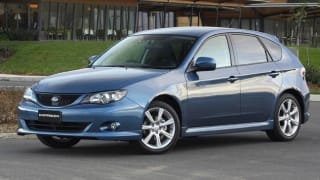The quickest way around a race track is simply mathematics.
Going faster and beating all your mates is directly proportional to a diminishing fear factor and a rising-rate expense program divided by the money in your bank account.
To go faster, a rough rule is $10,000 a second per lap. That is, spend an extra $10,000 on your race car and you will be one-second quicker per lap faster.
Explore the 2008 Mitsubishi Lancer range
Theoretically, you'd spend $30,000 for a three-second rocket around the circuit but sadly, the formula is disproportionate. You may only gain 1.25-seconds, for example.
So the question is: Do you pay an extra $29,200 over the Mitsubishi Lancer Ralliart SST for the Evolution X MR and gain a one-second 0-100km/h sprint time?
Or do you enjoy the Ralliart and use the "spare" money to buy (a) BHP Billiton shares, (b) a whopping plasma screen and surround sound system, or (c) the Kawasaki Ultra 250X jet ski.
Money may not be the only reason to consider forgoing the one-second advantage.
The Ralliart comes with practically all the looks of the Evo X and even has similar mechanicals. Even the aluminium bonnet is identical.
Drivetrain
It has the same basic engine though is dumbed down to 177kW from the Evo's 217kW. It has 343Nm of torque — compared with the Evo's 366Nm — and is delivered at lower revs.
The gearbox — Mitsubishi's new and quite delightful dual-clutch six-speeder — is also shared though the Evo allows three driving modes to sharpen the ride.
Driving
Ride comfort is better in the Ralliart — though the MR isn't bad and certainly up on its predecessor — which extends its audience to include children and the wife.
Combined with all-wheel drive, it makes a sedan that can live comfortably in the city and country with a dynamic performance and safety personality when required.
Drive it as an automatic and the 2-litre engine shows some weakness at low revs.
This lag is more pronounced than the Evo — though even this car has some hesitation — mainly because of it misses out on the Evo's twin-scroll turbocharger that works better across the rev range.
The Ralliart's engine will, however, quickly smarten up by 2500rpm and be on song at 4000rpm right up to near 7000rpm.
At which point your smile will only be eroded by realisation that the car is consuming premium unleaded petrol at a rate that would shame beer-drinking end-of-semester uni students.
Treat the Ralliart nicely, though, and 11.4 litres/100km is entirely acceptable in city and suburbs, plus a short time in the country.
The gearbox is pin sharp on changes and will step up with higher revs before it upchanges when in Sport mode. The paddle shifters, by the way, are perfectly placed and have a default to full-auto when held.
Handling is first rate. As mentioned, it's not Evo X class but it's also not far short of the mark. The bottom line is you won't have a chance to test this car to its fullest on public roads anyway.
Mitsubishi aims this car at the driver who enjoys a fang and likes a car that shouts "performance".
The practicalities are shared with the base Lancer. That's a great start because the Lancer is a delightful small car with a great shape, very good cabin and boot space, and a pretty interior.
More goodies, such as the six-disc CD player, are added to the feature list but the healthy basics of most Lancers — a five-star crash rating, electronic stability control and seven airbags — remain.
Options include the Rockford Fosgate sound system ($750), that audio with sunroof ($2350) and those two with a multi-communication pack with sat-nav for $4750.
Comfort rates highly for those in the sports-tailored front seats, less so for the rear where firm foam and short thigh length makes adults wish for shorter journeys.
No complaints, however, about leg and headroom though I'll put my two-cents worth in about that space-saver spare.
But this is a very appealing package. It serves to uphold the Evo image while saving its buyers near-on $30,000. The only cost is one second.














